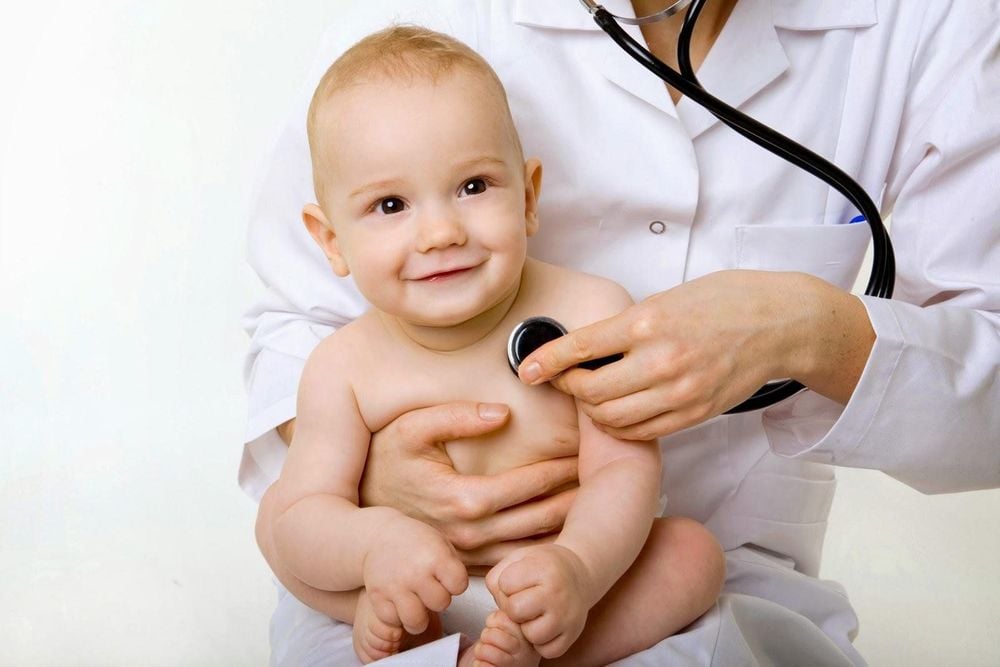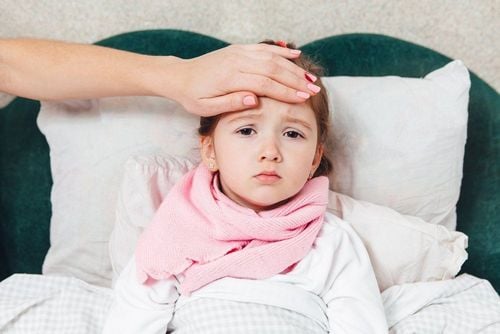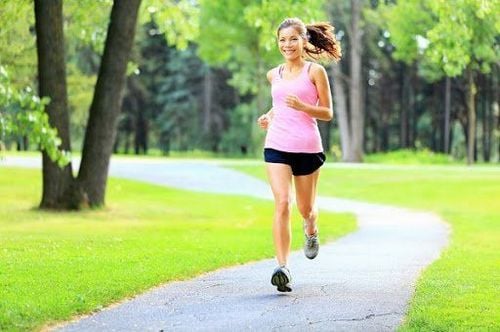Depending on age, children can have a pulse rate of 43 to 180 beats per minute. Newborns have the highest pulse rate and it slows down as they get older. Knowing what a normal heart rate is and how to check your child's heart rate can help you avoid unnecessary anxiety about your child's heart rate. So what is the normal heart rate for a child after exercise?
1. Normal heart rate in children
Many parents may know that their child's pulse or heart rate ranges from 60 to 100 beats per minute. However, they may be surprised to learn that their children often have a higher heart rate than adults. Depending on age, children can have a heart rate of 43 to 180 beats per minute. Newborns have the highest pulse rate and it gradually decreases as they get older. Knowing what a normal heart rate is and how to check your baby's heart rate can help you avoid unnecessary anxiety about your baby's heart rate. It can also help parents determine if their baby's pulse is slow or fast when they are sick or have certain heart diseases and let them know when to seek medical help.
How to take your baby's heart rate
A heart rate, also known as a pulse, is the number of times the heart beats per minute. Parents can take their baby's pulse by placing their fingers on their baby's wrist, the inside of the elbow, the side of the neck, or the top of the foot. These locations represent areas of the body where arteries are located. For example, the carotid artery is in the neck and the radial artery is in the wrist.
Taking your baby's heart rate
Parents will know when they have found their baby's pulse when they begin to feel a regular rhythm. Once found, parents should count the number of beats they hear for 60 seconds. Alternatively, they can count that number for 30 seconds and then multiply by 2 to get the number of beats per minute.
Use a watch with a second hand or a stopwatch to keep track of the time. Many cell phones have built-in stopwatches, which is convenient. Parents can also find a heart rate app for their smartphones. Often, they have to put the child's finger on the camera lens, so it may not be a good choice for young children, who can barely hold still for a minute.

Resting heart rate and target heart rate
Before we look at what is considered a normal heart rate, it is important to note that experts talk about a few different rates. A resting heart rate is a person's heart rate when they are not exercising or engaging in other physical activities, such as when they are watching a movie or reading a book. This is exactly what parents want to measure for their children.
Parents may also have heard of the term target heart rate, although this is more commonly used for teens and adults. This is the ideal level that a child's heart rate should be when exercising or doing physical activity. It is useful when parents want to make sure their child is exercising or being active effectively.
Normal heart rate
A child's resting heart rate by age is measured when the child is at rest and not crying, running, or playing. Listed are the normal heart rate ranges for children from birth to 18 years of age based on a large review study in the Lancet. These measurements were taken from children who were resting and newborns who were alert and healthy. The median number listed is the "resting heart rate" and represents the middle heart rate of the entire sample. During crying or physical activity, a child's heart rate may increase to the upper limit of normal for his age. Similarly, it may decrease to the lower limit of normal when he is sleeping.
It is best for parents to talk to their pediatrician if they are concerned about their child's heart rate. There are some discrepancies between different reference ranges for children's heart rates. A pediatrician can provide parents with a more accurate normal rate specific to their child. Use this as a guide, but not a rule, for dealing with an increased heart rate in children.

2. What is the normal heart rate for a child after exercise?
Healthy habits should be instilled in children from an early age. Children who grow up with a focus on physical activity will have healthy habits ingrained in them. The Centers for Disease Control and Prevention recommends that children and adolescents get at least one hour of physical activity each day. Many activities can be considered a good physical activity for children. However, if parents are unsure whether an activity counts, check their child's heart rate to see if they are exerting themselves enough.
Take a pulse
Use your index, middle, and ring fingers to take your child's pulse. Place your fingers on your child's wrist just below the base of the thumb or on one side of the child's windpipe. Press gently until you feel a pulse. Using a watch or clock with a second hand, count the number of beats your child's heart beats in 10 seconds. Multiply the number by six to determine your child's heart rate. However, to get an accurate reading, experts recommend counting the number of beats your child beats in 60 seconds. The resulting number is the number of beats your child's heart beats per minute.
When should you start counting your child's heart rate?
To determine whether your child's physical activity, such as playing on the playground, counts as exercise, plan to monitor your child's heart rate the next time he or she is at the park. Before you leave the house, record your child's resting heart rate. Once you get to the park, let your child play for 10 minutes, then take your child's pulse to count his or her heart rate. Parents should go to the play area and start counting as soon as possible so that the child's heart rate doesn't have a chance to slow down when he or she stops playing. Let your child return to play and check his or her heart rate every 10 minutes, recording the results.
What is the ideal heart rate for a child after exercise?
A child's heart rate depends on his or her age. A 3- or 4-year-old should have a heart rate of about 137 beats per minute while exercising. Meanwhile, children aged 5 to 7 have a heart rate of only about 133 beats per minute. From 8 to 11 years old, it is even lower, 130 beats per minute. Finally, in adolescence, the heart rate after exercise is significantly lower. Children aged 12 to 15 only need to reach a heart rate of 115 beats per minute while exercising.

Effects on heart rate
After monitoring their child's heart rate during physical activity, parents can take steps to help make their child's activity eligible for exercise. If your child's heart rate is high, interrupt their play frequently with breaks for a drink of water or a short chat. If your child's heart rate is low, encourage them to focus more on the game or challenge them to a race or a competition. Try timing them and encourage them to do something faster.
Listening to your child's heartbeat is a truly beautiful and sacred moment for parents. A child's heartbeat is often naturally faster than that of their parents or adults. This partly represents their vivacity and passion for life. However, an abnormal heart rate can also be a sign of other health problems. Therefore, parents need to regularly monitor and inform doctors about their child's condition whenever they feel that their child's heart rate is unusual.
If you need consultation and examination at Vinmec Hospitals in the healthcare system nationwide, please arrange an appointment on the website for service.
To arrange an appointment, please call HOTLINE or make your reservation directly HERE. You may also download the MyVinmec app to schedule appointments faster and manage your reservations more conveniently.
References: verywellfamily.com, health.clevelandclinic.org, livestrong.com
References: verywellfamily.com, ealth.clevelandclinic.org, livestrong.com












